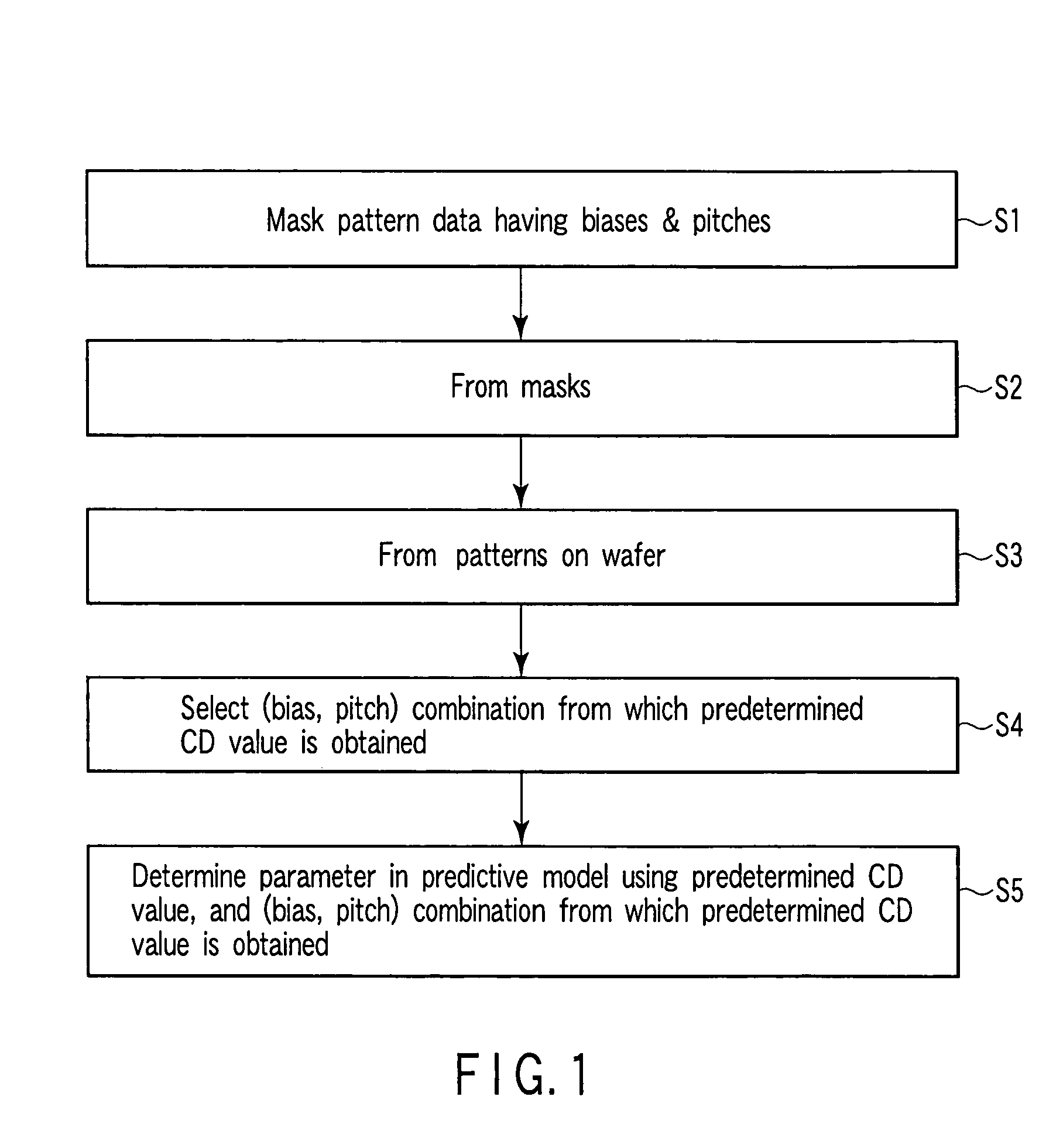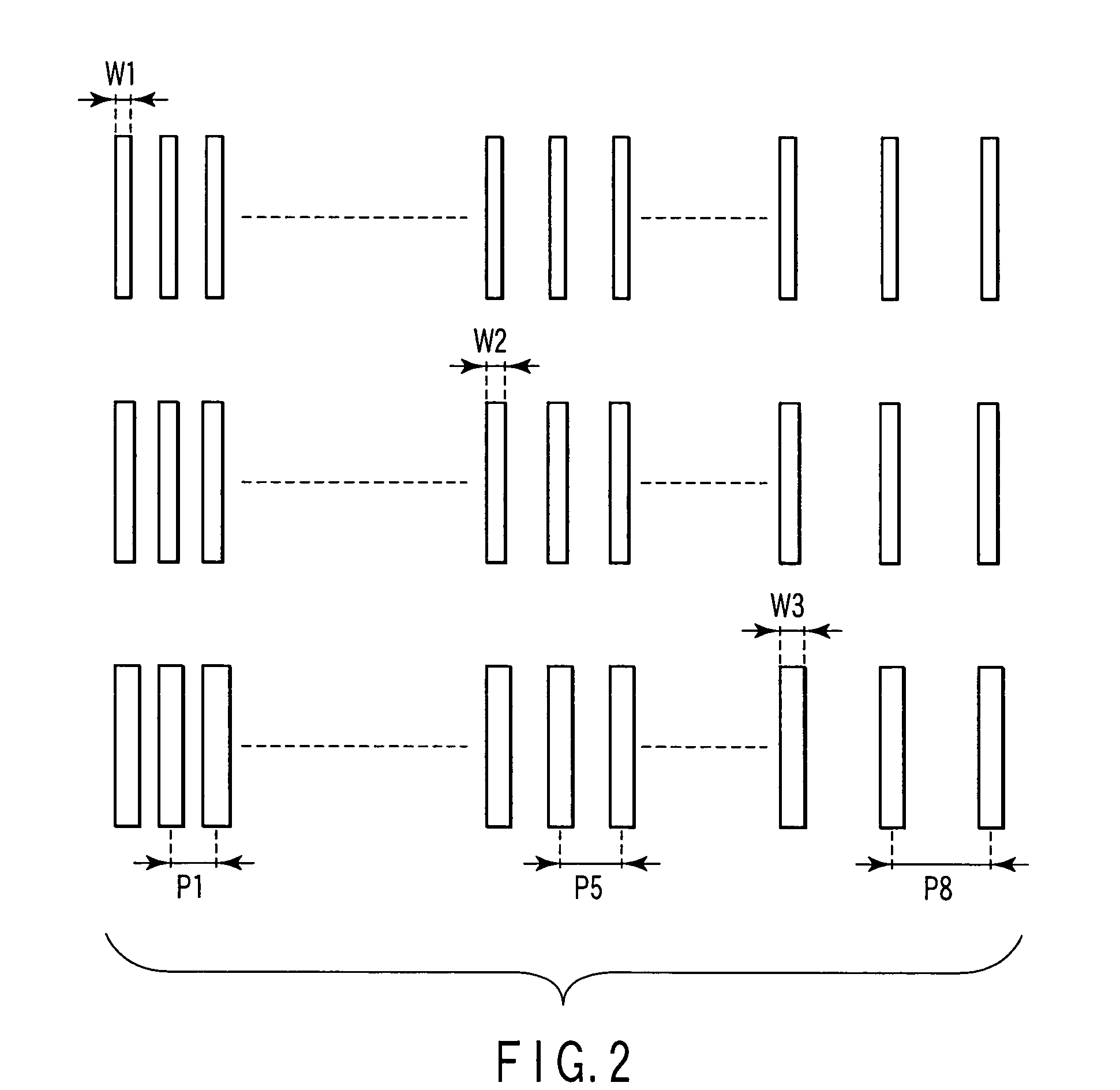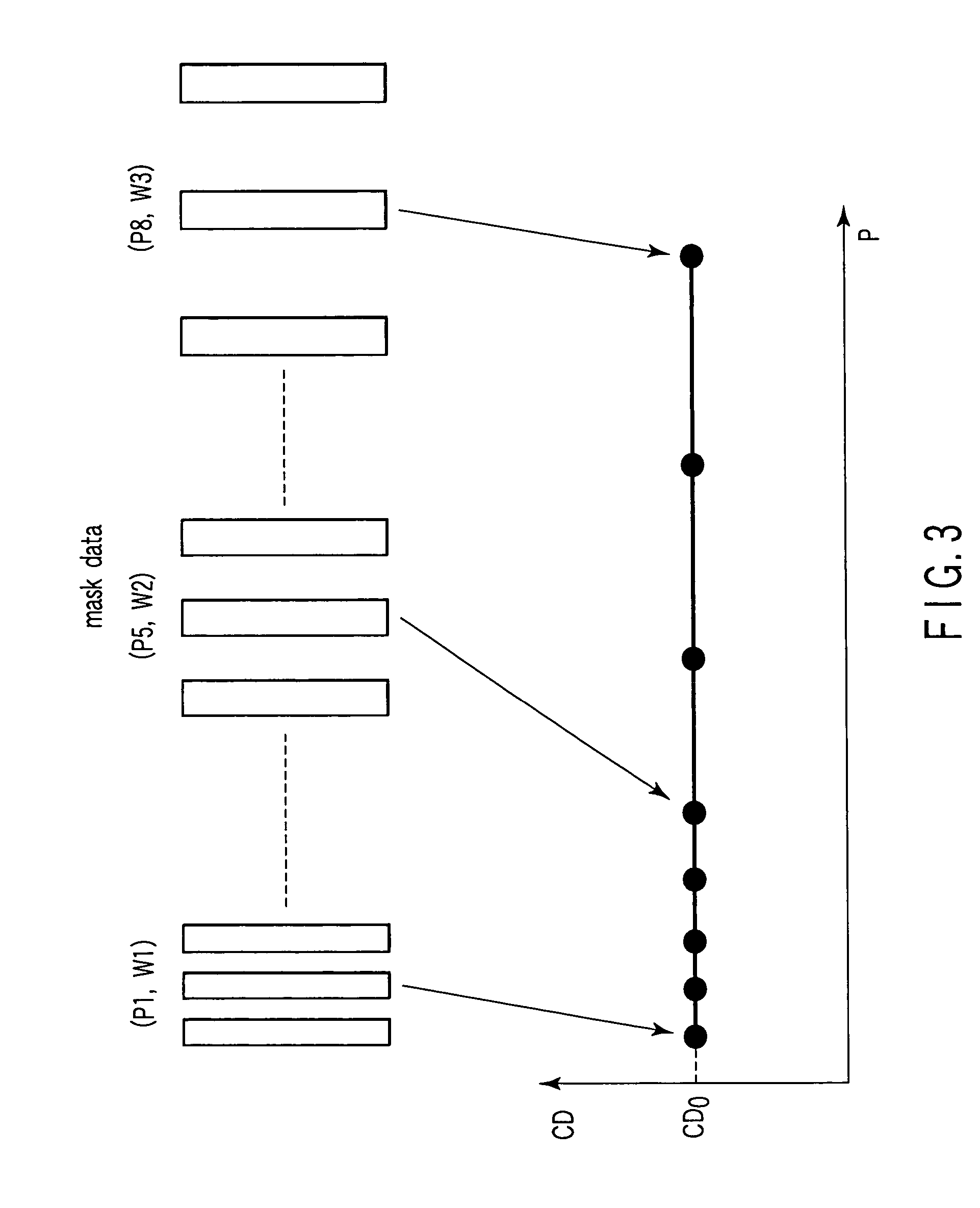Method of creating predictive model, method of managing process steps, method of manufacturing semiconductor device, method of manufacturing photo mask, and computer program product
a predictive model and process step technology, applied in the field of creating predictive models, can solve the problems of difficult to set a target of an allowable fluctuation amount of a process, difficult to manage the steps of manufacturing a semiconductor from a viewpoint of ppe, and difficult to verify the precision of the cd value obtained by extrapolation
- Summary
- Abstract
- Description
- Claims
- Application Information
AI Technical Summary
Benefits of technology
Problems solved by technology
Method used
Image
Examples
first embodiment
[0046]FIG. 1 is a flowchart showing a method of creating a process proximity effect predictive model (hereinafter referred to simply as the predictive model) according to a first embodiment of the present invention. Here, a method of creating the predictive model will be described which is of such a type that a finally obtained dimension of a pattern on a wafer is directly predicted from mask drawing data.
[0047]First, the mask drawing data (mask pattern data) is prepared corresponding to a pattern group for modeling which comprises a plurality of line & space patterns obtained by changing line widths (biases) of line patterns and pitches of the line & space patterns with respect to a line & space patterns which comprises repetition line patterns (step S1).
[0048]Here, the line & space pattern group shown in FIG. 2 are used as the pattern group for modeling. There are three types of line widths (biases) W1 to W3. There are eight types of pitches P1 to P8. Therefore, the mask drawing d...
second embodiment
[0083]FIGS. 8A to 8C are explanatory views showing a method of managing a semiconductor manufacturing step according to the second embodiment of the present invention.
[0084]In FIGS. 8A to 8C, the ordinate shows a dimension difference (ΔCD) between the present step and the previous step. Concretely, the ordinate ofFIG. 8A shows CD of a photo mask (present step)-CD of the mask drawing data (one step before), the ordinate of FIG. 8B shows CD of a resist (present step)-CD of the photo mask (one step before), and the ordinate of FIG. 8C shows CD of a wafer pattern (present step)-CD of the resist (one step before). The abscissa shows a pattern environment (e.g., the pitch of the line & space pattern of the first embodiment) P.
[0085]One-dot chain lines in FIGS. 8A to 8C shows the pattern environment P in which a predetermined dimension is obtained after a processing step and a target value of ΔCD corresponding to the environment. Instead of the target value of ΔCD, a dimension difference b...
third embodiment
[0153]The third embodiment of the present invention will be described hereinafter. As described in the present specification, as the method of setting the control width with respect to the target dimension for each of the steps (the step of forming the mask drawing data, the step of manufacturing the photo mask, the lithography step, the processing step) of the manufacturing process of a semiconductor device), the following methods (1) and (2) have been described:
[0154](1) the method of equally dividing the control width with respect to the average value or the standard deviation value of the residual from the target line width in all the patterns; and
[0155](2) the method of converting the dimension fluctuation attributed to each step into the final finally obtained dimension fluctuation in consideration of the dimension fluctuation sensitivity between the steps to set the control width of each step.
[0156]In the present embodiment, a method of managing the steps in consideration of ...
PUM
| Property | Measurement | Unit |
|---|---|---|
| width | aaaaa | aaaaa |
| dimension | aaaaa | aaaaa |
| width | aaaaa | aaaaa |
Abstract
Description
Claims
Application Information
 Login to View More
Login to View More - R&D
- Intellectual Property
- Life Sciences
- Materials
- Tech Scout
- Unparalleled Data Quality
- Higher Quality Content
- 60% Fewer Hallucinations
Browse by: Latest US Patents, China's latest patents, Technical Efficacy Thesaurus, Application Domain, Technology Topic, Popular Technical Reports.
© 2025 PatSnap. All rights reserved.Legal|Privacy policy|Modern Slavery Act Transparency Statement|Sitemap|About US| Contact US: help@patsnap.com



